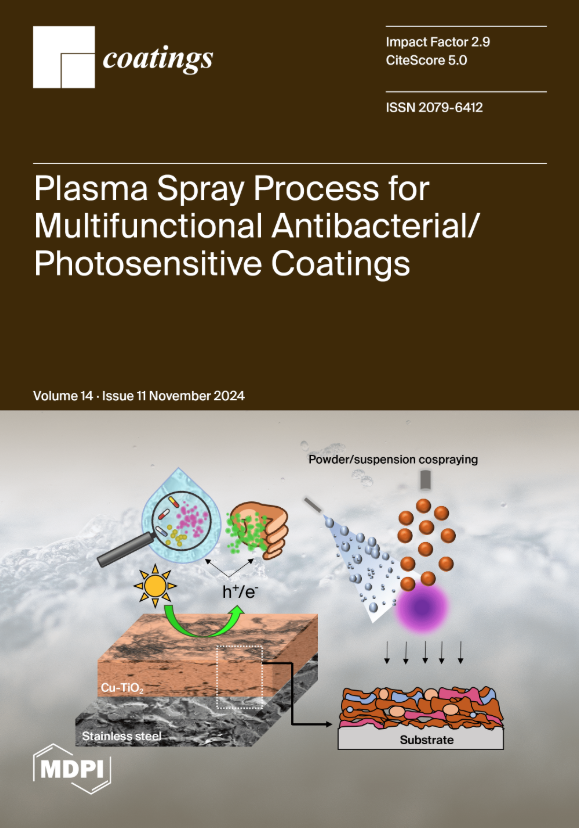The Influence of Rust Layers on Calcareous Deposits’ Performance and Protection Current Density in the Cathodic Protection Process
IF 2.8
3区 材料科学
Q2 MATERIALS SCIENCE, COATINGS & FILMS
引用次数: 0
Abstract
Calcareous deposits are a consequential outcome of cathodic protection in marine environments, exerting significant influence on the cathodic protection process and current density prerequisites. This study investigates the process of calcium deposition and its impact on the cathodic protection current density of carbon steel under the influence of a rust layer in different corrosion periods. This was investigated using electrochemical impedance spectroscopy (EIS), scanning electron microscopy (SEM), and energy-dispersive spectroscopy (EDS). The results demonstrate that the formation processes of calcareous deposits vary after exposure to the corrosive environment for 0, 7, and 30 days. While a longer corrosion period leads to thicker rust layers on the metal surface and a higher initial cathodic protection current, the presence of these rust layers facilitates the deposition of calcium and magnesium ions, resulting in a rapid decrease in cathodic protection current density after a certain period. Meanwhile, long-term cathodic protection facilitates the thickening and densification of the oxide layer, thereby enhancing its protective efficacy, effectively reducing the corrosion rate of the metal surface and stabilizing the cathodic protection current density at a lower level. This study provides theoretical data and experimental evidence to support the maintenance of corroded marine engineering equipment.锈层对阴极保护过程中石灰质沉积物性能和保护电流密度的影响
钙质沉积是海洋环境中阴极保护的必然结果,对阴极保护过程和电流密度前提条件有重大影响。本研究探讨了钙沉积过程及其对不同腐蚀期锈蚀层影响下碳钢阴极保护电流密度的影响。研究使用了电化学阻抗光谱(EIS)、扫描电子显微镜(SEM)和能量色散光谱(EDS)。结果表明,在腐蚀环境中暴露 0 天、7 天和 30 天后,钙质沉积物的形成过程各不相同。虽然腐蚀时间越长,金属表面的锈层越厚,初始阴极保护电流越大,但这些锈层的存在促进了钙镁离子的沉积,导致阴极保护电流密度在一定时间后迅速下降。同时,长期阴极保护有利于氧化层的增厚和致密化,从而提高其保护效能,有效降低金属表面的腐蚀速率,并将阴极保护电流密度稳定在较低水平。本研究为腐蚀性海洋工程设备的维护提供了理论数据和实验证据支持。
本文章由计算机程序翻译,如有差异,请以英文原文为准。
求助全文
约1分钟内获得全文
求助全文
来源期刊

Coatings
Materials Science-Surfaces, Coatings and Films
CiteScore
5.00
自引率
11.80%
发文量
1657
审稿时长
1.4 months
期刊介绍:
Coatings is an international, peer-reviewed open access journal of coatings and surface engineering. It publishes reviews, research articles, communications and technical notes. Our aim is to encourage scientists to publish their experimental and theoretical results in as much detail as possible. There is no restriction on the length of the papers. Full experimental and/or methodical details must be provided. There are, in addition, unique features of this journal:
* manuscripts regarding research proposals and research ideas will be particularly welcomed
* electronic files or software regarding the full details of the calculation and experimental procedure - if unable to be published in a normal way - can be deposited as supplementary material
 求助内容:
求助内容: 应助结果提醒方式:
应助结果提醒方式:


